Itinerary: Tyumen– Tobolsk
Duration: 4 days/3 nights
This project highlights the importance of Peter the Great` epoch in 18th century as well as the history of the Caroleans in Siberia. Swedish army exiled officers, who left considerable impact on Tobolsk`s cultural and economic development..
2021 marks the 300-year anniversary of the Treaty of Nystad, which ended the Great Northern War between Sweden and Russia.
Subsequently Russia established itself as an Empire.
There was no other province in 18th century, which could compare its` land areas with Siberian governorate with Tobolsk as the capital of Siberia. Lands of Siberia stretched 1000 km from Ural Mountains to the Pacific Ocean, from Kazakh steppes to the Arctic Oceаn.
Siberia was explored at the end of 16th century, but has been considered as “terra incognita” for the next several years not only for Europe but even for Moscow.
The First Tsar who belonged to the reigning dynasty of Romanov, visited Siberia in 1837. Some travelers, whose ways have happened to lead them here from Europe to Asia, West and East, described Siberia as unique land which cannot be compared with any other place in the world.
More than a thousand highly educated European army officers end up in the ancient capital Tobolsk in 1710. These army officers were named «Caroleans» and belonged to the army of Charles XII, the King of Sweden.
The Swedish officers, who settled in Russia after the end of The Battle of Poltava stayed in Siberia for more than ten years until both sides signed a peace treaty. More than third of the «Сaroleans» preferred to remain in Siberia, as it had become their second homeland.
After three centuries it is not so easy to estimate the real value of these historical events. Even today the citizens of Tobolsk recognize the heritage that Swedes left them.
Due to the fact that Caroleans were known as skilled engineers and architects, they were involved in the establishment of the Tobolsk Kremlin, they also built the road from downtown to the upper town and fixed the system of river channels, which solved the flooding problem in Tobolsk.
Caroleans organized the first Puppet Theater and wind orchestra in Tobolsk.
Records, which fortunately have been saved in thoughts-diaries and treatises of Swedish officers have helped us to get more details about the history of indigenous Siberian communities.
Johann Bernard Muller, a dragoon captain of the Swedish army, published his book «The Life and Culture of Ostyaks» in 1720 in Berlin, about the missionary expedition with Philotheus Leschinskyi, a metropolitan of Tobolsk Dioces.
There were many gifted artists, jewelers, shoemakers, musicians, tailors, chemists, doctors, teachers and tutors amongst Caroleans.
Laurs, who was a Swedish pastor, contrived the City Clock in Tobolsk.
Jakob Shulz, a regiment healer, was so talented that a lot of patients from Tyumen and other Siberian cities tried to visit him in Tobolsk.
The head of Caroleans` community, Curt Friedrich von Wreech, opened the Tobolsk Lutheran School for Russian and foreigners students (including children and adults).
Matvey Gagarin, a governor of Тobolsk, despite his senior position sympathized with the Caroleans and tried to make their life in this foreign land easier. The Caroleans were involved in commerce and allowed to ply a trade, set up shops and draw rations in monetary and grain value, get married with local women and practice Lutheran religion.
This program is celebrating the 300 — year anniversary of the peace treaty between Sweden and Russia. It is aimed to honor the memory of people with brave hearts, who happened to spend their life in Siberia out of choice. Officers who changed the world around them at the bidding of the heart and fate.
One of the main reasons for creating this project is the ordinary life of one of Swedish officers. Who was able to stay faithful and continue carrying the love for his homeland through ths whole life, despite captivity and the ups and downs of his life.
The program covers the 400-year history of Siberia, including the epoch of discoverers.
You will enjoy traveling with us!
Itinerary:
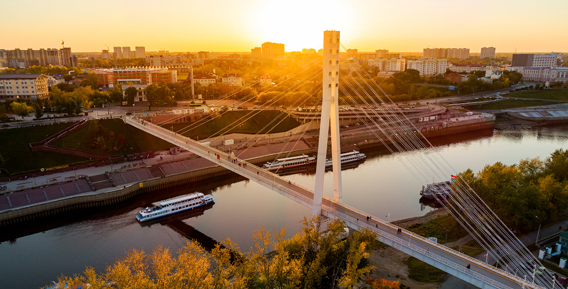
1st Day
05:30 – Arrival at Tyumen International airport «Roschino».
Meeting with TZT representative. Transfer to booked hotel.
09:00 – Breakfast at the hotel.
10:00 – 12:00 – Pick up at the hotel for the Tyumen city sightseeing excursion.
Sightseeing bus-walking tour around Tyumen is opening the first day of the program. The Excursion will introduce us to the 435-year history of the first Russian city in Siberia as unique region, where future and the past joined together.

The first stop is the historical center of Tyumen city. Where we can admire the views from romantic and airy Lovers Bridge, and take a walk in the only four-level embankment promenade in Russia. Following stop is the architectural ensemble of Holy Trinity Monastery. It was built in the beginning of 18th century and became a witnesses when one thousand Swedish officers came to Siberia, after The Battle of Poltava in 1709.
The next stop is the side of Tyumen`s origin. 300 Cossacks the leadership of Ermak built a wooden fortress a stockade town at the end of 16th century. An Artistic Map of Tyumen made of black Granit is located at the historical city center.
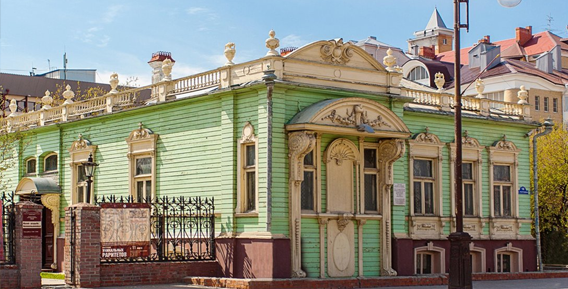
12:00 – 13:30 – Visit to the Kolokolnikovs Museum Homestead.
Tyumen is known as the homeland of many merchant dynasties. Amongst merchants who contributed their assets to the development of city, there were first-guild merchants, with assets over one million of rubles in trade volume. Stepan Kolokolnikov, a tea-dealer, was one of them. Today his house is one of the oldest wooden building in Tyumen, where we will continue our introduction to the history of Tyumen. The Russian crown prince Alkesandr stayed at the house twice during his journey to Tobolosk – in May and June of 1837.
13:45 – 14:45 – Lunch at the 15/86 Restaurant.
15:00 – 17:15 – Visit to the Museum of the History of Trans-Urals Science and Technology at Tyumen Industrial University.
17:20 – Transfer to the hotel. Leisure time.
18:30 – 19:30 – Dinner at Chum, the Restaurant & Museum.
The first dinner will be hosted at a restaurant where authentic northern cuisine is served. This restaurant is known all over the country. It is designed in the traditional cone-shaped tents of indigenous Siberian communities. The menu includes meat, fish and wild fowl.
Unique Siberian delicacies are available such as stroganina on the ice with white salmon and starlet.
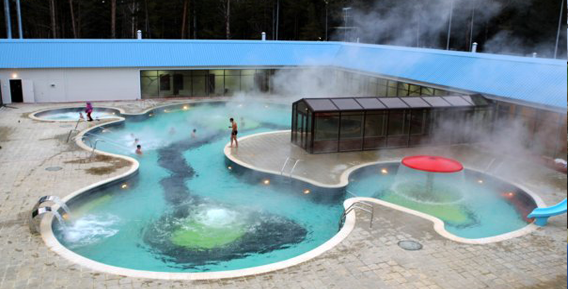
20:00 – 22:00 – Trip to the Thermal Hot springs.
Unique hot springs are the main natural landmark of Tyumen region. Springs with natural mineral water with a constant temperature of +36℃…+38℃*. The Hot Springs reduce stress, promote sleep and boost blood circulation.
Guests are welcomed to visit the Springs all year round to experience the beauty of every season.
*+36℃ = +94℉
22:00 – Transfer to the Hotel.
2nd Day.
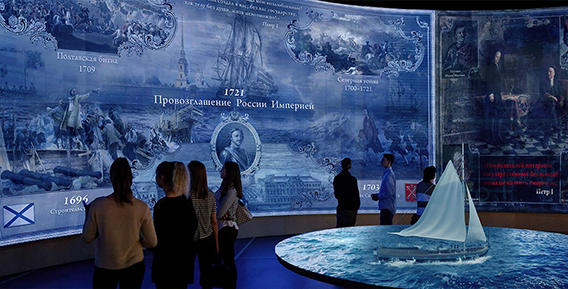
08:30 – 09:30 – Breakfast at your hotel.
10:00 – 12:00 – Excursion to the Historical- Multimedia Park « Russia is My History».
This multimedia museum was opened for guests in 2017. Modern 3D-technologies demonstrate the history of Russia during the epoch of Peter The Great and «The Swedish legacy».
12:00 – 13:00 – Master-class «The secret of Siberian wooden toy handicraft» led by a expert of wooden architecture.
Similar to the Dalecarlian (Dala) Swedish Horse, The Siberian Horse is known traditional Russian symbols with a history which began back in 9th century. Handcrafted horse figurines were the favorite toys of every child. During the master-class, you will have an opportunity to make a traditional figurine as well as the famous «Little humpbacked horse», one of the most popular fairy tale heros in Russia, by Piotr Ershov (written in Tobolsk in 1830).
13:15 – 14:15 – Lunch at the «Tyumen, the Old Siberian capital» Restaurant.
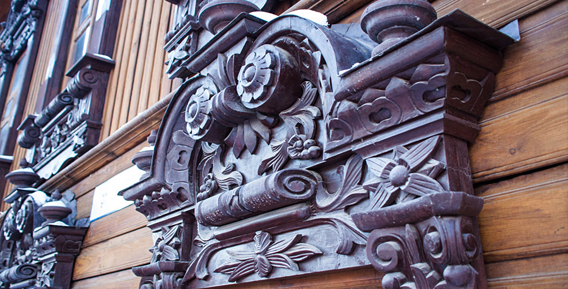
14:30 – 15:30 – Walking tour «The Beauty of Tyumen architecture».
This Excursion invites us to visit the residential quarters of Tyumen`s merchants. During the tour we will learn more about similarities between the architecture of Tyumen merchant houses and the Palaces of St. Petersburg. Also we will get to know the meaning of fancy decorated window molding.
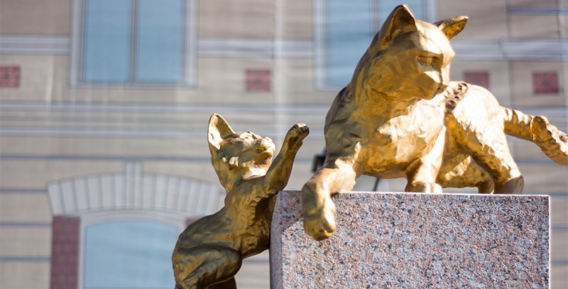
15:30 – 16:00 – visiting «Siberian Cat Square».
The Siberian Cats Square in the center of Tyumen got its name in 2008 thanks to events that took place in 1944. During the blockade of Leningrad (now St. Petersburg) the cat population became catastrophically small, as a result of which rats began to threaten the collection of paintings in the Hermitage and cats were brought from other cities to save the masterpieces. Today it is one of the most popular sightseeing destinations.
16:15 – 17:15 – Meeting with «Old Motors Tyumen» -the club of retro cars lovers.
The popularity of oldtimers in Russia and over the world is growing year by year. Tyumen car lovers can present a large collection of legendary models which were produced in Soviet times.
Today there are more than 15 types of Soviet vehicles from 1950 – 1980 in the club auto-park. During the visit don`t miss an opportunity to take a test drive. Photos allowed!
17:15 – 18:15 – Leisure time (or transfer to the hotel).
18:45 – 20:15 – Dinner at the Maksimych Restaurant.
3rd Day.
The historical names, given to Tobolsk are «The Pearl of Siberia» and «The Second Capital». Magnificent city, based on the confluence of the Tobol and Irtysh Rivers. The city where a lot of historically important moments for Russia and Sweden took a place. «Russian» Swedes became European ambassadors, who had to discover Russia by living their life here far from their homeland. Swedes influenced the development of Siberia as a region.
06:00 – 07:00 – Early breakfast at the hotel.
07:30 – Departure to Tobolsk
11:30 – Arrival at Tobolsk, check-in at the booked hotel*.
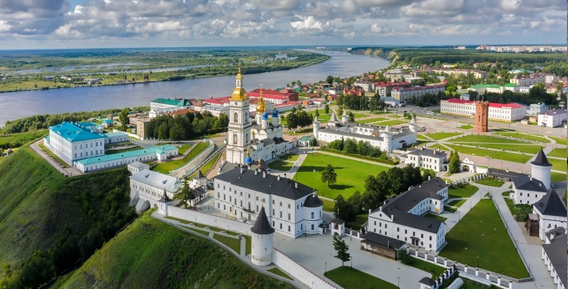
12:30 – 13:30 –«Legends of Siberian Kremlin» excursion.
Visit to «Merchant Trade Court».
The Tobolsk Kremlin is the only white stone kremlin in Siberia. It was built in the beginning of 18th century by Remezov S.U. with the participation of Swedish officers. It became the main architectural heritage monument of Siberia. This historical center includes spiritual area (St. Sofia Yard), administrative (Voevoda Dvor), and trading (Merchant court). There is also the Prison Castle. The Merchant court reminds us about the Swedish legacy in the history of Tobolsk.
13:30 – 14:30 – Lunch at the Povarnya café. Traditional Siberian cuisine.
14:30 – 15:30 – Master-class at «nettle textile workshop».
Weaving traditions of Siberia began back in 16th century. Indigenous Siberian used the nettle fiber to produce their clothes. This fabric was wearable enough, warm and healthy. Master class will present the Siberian nettle weaving traditions to the guests.
15:30 – 16:30 – «Governor’s palace» excursion.
The history of Tobolsk, Siberian governorate`s administrative center began in the beginning of 18th century. The Governor’s Palace is the key museum in Tobolsk Kremlin. Here the first governor of Siberia, M. Gagarin ruled the city and administrated his patronage to Swedish prisoners.
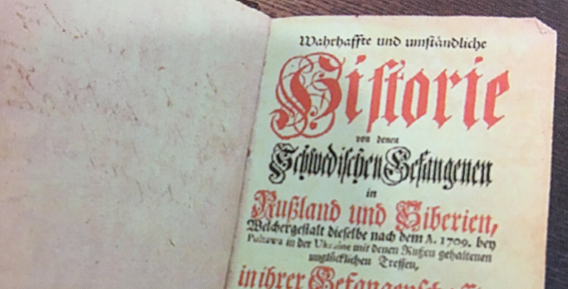
16:40 – 17:20 – Express Excursion «Scientific Library».
The pride of the library is its unique rich collection of books from 12th century. The library offers Russian books and unique international masterpieces, including books which have been dedicated to the life of Swedish officers during Siberian exile.
17:30 – 18:30 –Opened museum depository (Renterey) excursion.
Renterey was designed by S. Remezov as the first triumphal memorial building in Siberia. It is one of the most significant masterpieces of Siberian architecture that combines elements of Scandinavian culture, old Russian traditions and the architecture of Peter the Great era. Another name for the building is «Swedish chamber», because exiled Swedish people (after the great Northern War in 1700-1721) were engaged in its construction. If you are interested in seeing more mysterious ancient treasures and exhibits, than the Kunstkamera Museum could offer, visit Renterey. Its collection includes minerals, archeological artefacts and household items of Siberian communities of 15th— 20th centuries.
19:00 – 19:45 – Visit to Tobolsk Drama Theater.
The first Puppet Theater in Tobolsk was founded by Swedish army officers. The Theater of Tobolsk represents the traditional Swedish fairy tales, «The Wonderful Adventure of Nils Holgersson» by Selma Lagerlöf.
The Theater opened a small museum with exhibition of soft-bodied doll, the heroes of famous Tuve Jansone, a Swedish-speaking Finnish author of The Moomins.
20:00 — 21:00 – Dinner at MaDonna, the Theater Restaurant.
21:00 – Arrival to the hotel. Leisure time.
4th Day.
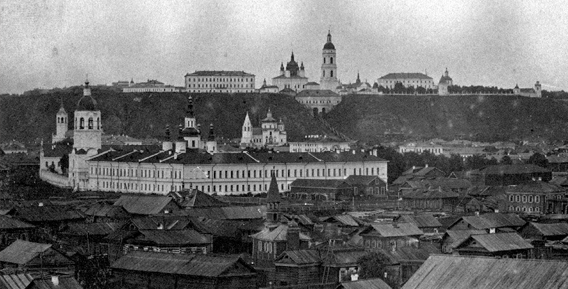
09:00 – 10:00 – Breakfast at the hotel.10:00 – 12:00 – Explore the «Downtown area of Tobolsk».
The importance of this historical part of Tobolsk cannot be underestimated. It was the place where the social and the spiritual lives of the local communities concentrated. Education and culture, merchantry and craft industry, religion and traditions developed in the downtown area. The main trade routes of North and South, East and West passed here.
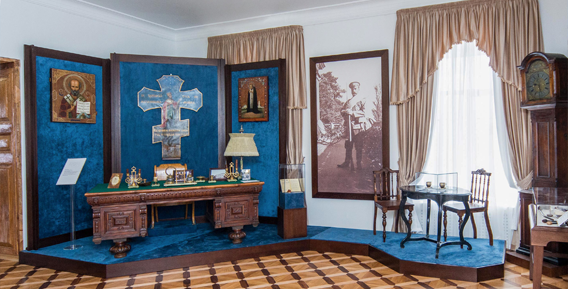
12:00 – 13:00 – The «Museum of the Family of Emperor Nicholas II»
Tobolsk became a witnesses of an important historical period, when the family of the last Russian Tsar had been exiled to Siberia. The museum complex resides in the historical memorial building of Governor’s residence where Emperor, Empress and their 5 children lived from August 1917 to April 1918.
The Memorial exposition describes the personality of the last Emperor and highlights the power of Russian soul which can easily abnegate and scarify itself for the sake of an idea and the nation, as well as express warm feelings too its family and people who were close to him.
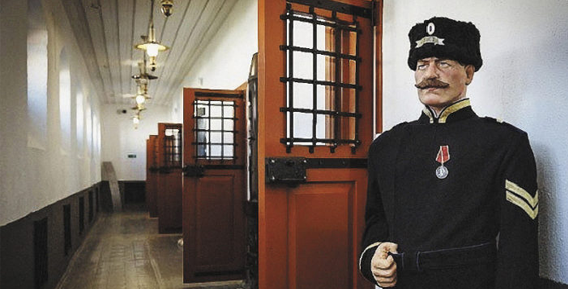
13:00 – 14:00 – Lunch at the Parnas Restaurant
14:15 – 15:15 – «The Prison Castle» excursion.
An inalienable part of Siberian history is exile of political undesirables: criminals, insurgents and captives.
The Prison Castle is the most mysterious architectural complex of Tobolsk Kremlin. It was once the strictest Russian prison until 1989.
Here you can learn about the everyday difficult life of the prisoners of before the Russian Revolution and in Soviet time.
15:15 – 15:45 – «Tobol. Freeze Frame» exhibition.
The film «Tobol», which recently came out, drew a lot of public attention to the epoch of Peter the Great and the events which were taking place in Siberia in the beginning of 18th century. The most interest was addressed to Swedish community of the Сaroleans and their life in Tobolsk.
16:00 – 17:15 – Visit to the «Museum of Crafts».
Swedes, being skilled masters in many spheres, had contributed to the history of Siberian crafts. The «Museum of Crafts» exposition introduces us to different types of trades and crafts, which passed through generations. Including the historical and esthetic experience of the local community, and the source of religious and moral foundation.
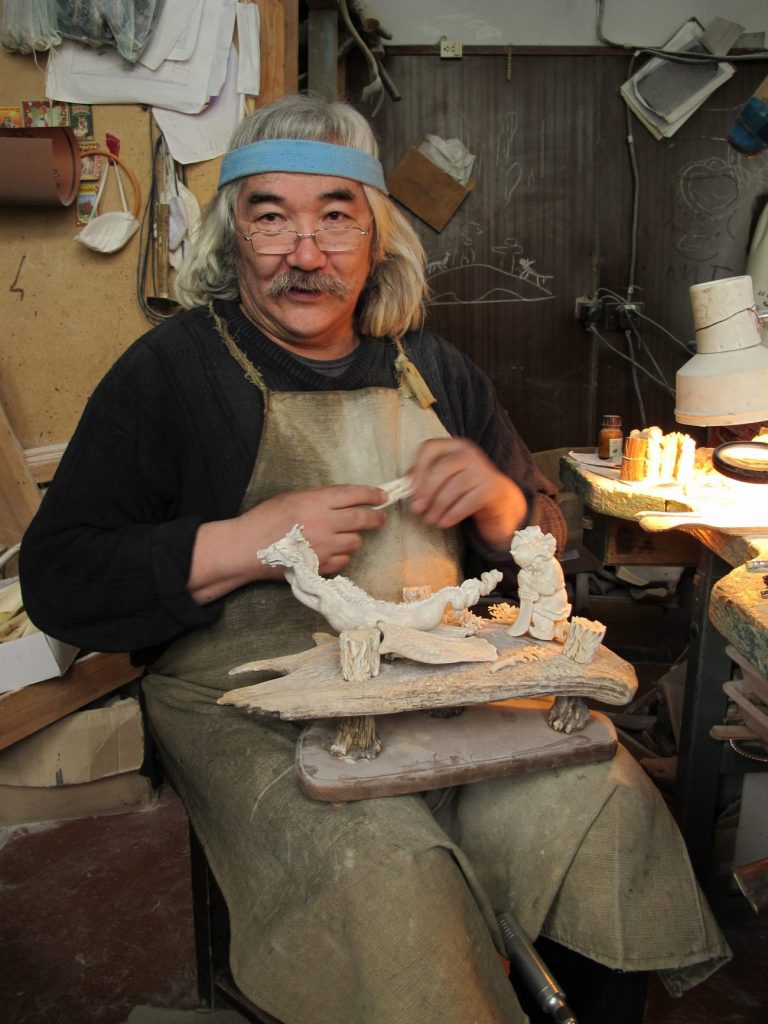
17:15 – 18:30 – Attend a Master Class in Bone-Carving in the studio of Artist Minsalim.
Minsalim is a master bone-carver who crafts mammoth tusks and antler fragments into detailed figurines which are related to the myths and legends of a local brand of shamanism. The Secrets of bone-carving had been also discovered and used by the Swedish Caroleans. Proof is an unique bone-carved chess set, made by Erick Ulspar, which was given to Peter the Great through the governor, Gagarin M.P.
18: 30 – 19:00 – Leisure time.
19:00 – 20:00 – Dinner at the Mark and Lev Restaurant.
19:30 – Departure and transfer to the airport.
PRICE AVAILABLE UPON REGUEST
Included to the price:
- Transportation as per the program
- Meals: 4 breakfast, 3 lunches. Dinners are at extra costs.
- 3-night accommodation, based on Standard room type, DBL (including Tyumen and Tobolsk)
- Bus Excursion as per the program
- Excursions and entry tickets to the museums as per the program.
- Guide assistance
Tyumen hotel’s:
HOTEL «DOUBLE TREE BY HILTON» 4*
HOTEL Best Western Plus «SPASSKAIA» 4*
Tobolsk hotel’s: